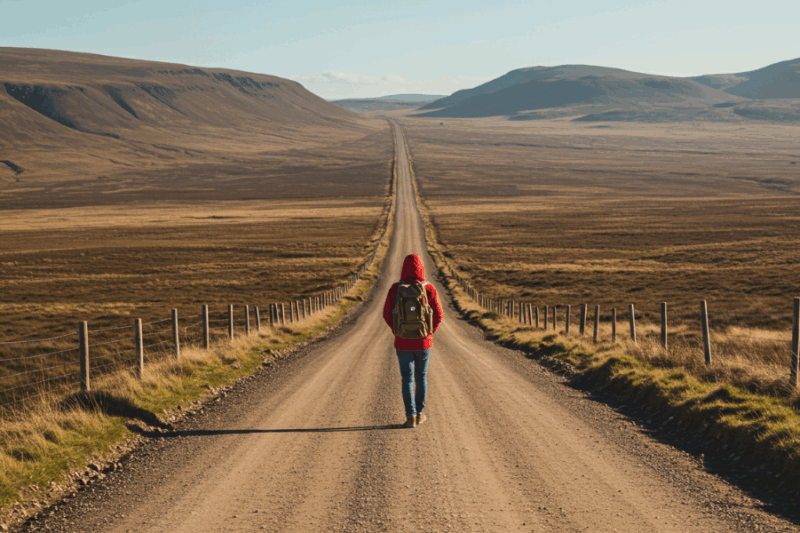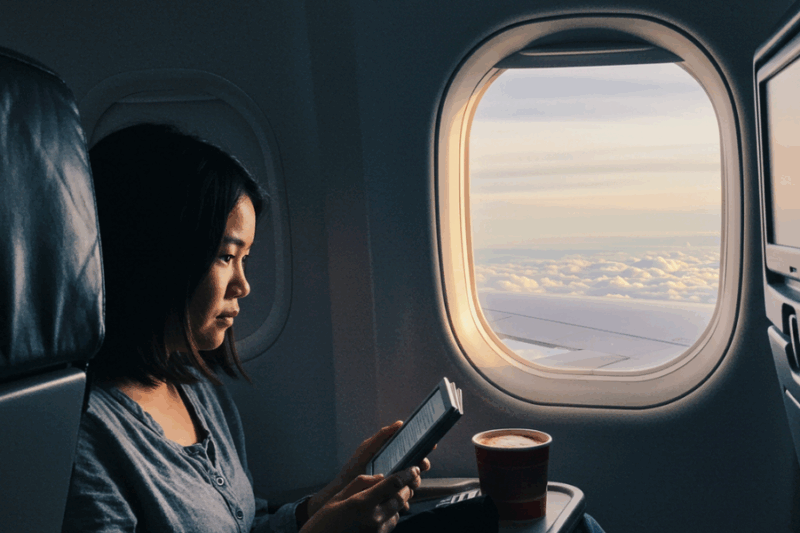Long-term travel offers unparalleled freedom to explore the world, but staying within budget is critical to sustain the journey. For minimalist travelers, sticking to a budget aligns with the ethos of simplicity—prioritizing experiences over possessions while keeping costs low. Whether you’re backpacking through Southeast Asia or digital nomading in South America, these practical strategies will help you manage finances effectively, requiring minimal gear and maximizing resourcefulness. Here’s a guide to maintain your budget over months or years on the road, with tips to keep your travel light and affordable.

Why Budgeting Matters for Long-Term Travel
Long-term travel demands financial discipline to avoid cutting your trip short. A well-managed budget stretches your savings, allowing you to explore more destinations or extend your journey. On my six-month Southeast Asia trip, I averaged $25/day by eating street food and staying in hostels, saving $3,000 compared to a $50/day lifestyle. These methods minimize expenses while keeping your carry-on light (20–30L backpack), ensuring mobility and peace of mind.
1. Set a Realistic Daily Budget
Establish a daily spending limit based on your savings and destination costs. In low-cost regions like Vietnam or India, $20–30/day covers accommodation, food, and transport, while Europe may require $50–70. Research average costs via Nomad List ($49/year) or X posts (e.g., “budget travel Thailand”). On my Cambodia trip, I set a $25/day budget ($10 hostel, $5 food, $5 transport, $5 activities), which kept me on track for three months. How to Do It: Calculate savings ÷ trip duration to set a daily cap. Add 10–15% for emergencies. Use apps like Trail Wallet ($5) to track spending.
Why It Works: Provides a clear financial framework, preventing overspending.
Time: 1 hour pre-trip planning.
2. Choose Budget-Friendly Destinations
Opt for countries with low living costs to stretch your funds. Southeast Asia (e.g., Vietnam, $20–30/day), South Asia (India, $15–25/day), or Central America (Guatemala, $25–35/day) are ideal. In Chiang Mai, I lived on $20/day, compared to $60/day in Singapore. Check visa costs (e.g., Cambodia’s $30 e-visa) and free-entry countries (e.g., Malaysia for 90 days). Use Skyscanner to find cheap flights ($30–100 for regional hops). How to Do It: Research costs on BudgetYourTrip.com or X. Prioritize countries with $1–3 meals and $5–15 hostels. Book flights 1–2 months out.
Why It Works: Low-cost destinations double your travel duration.
Cost Savings: $20–40/day vs. high-cost areas.
3. Stay in Affordable Accommodations
Hostels, guesthouses, or homestays cost $5–20/night compared to hotels ($50–100). In Hanoi, I stayed at Hanoi Backpackers ($5/night), saving $20/day over Airbnb. Use Hostelworld or Agoda for deals, or try Couchsurfing (free, donation-based) for cultural exchange. For longer stays (1+ month), negotiate discounts on guesthouses or co-living spaces (e.g., $200–400/month in Bali). Work exchanges like Workaway ($49/year) offer free stays for 20 hours/week. How to Do It: Book hostels 1–2 weeks ahead ($5–15/night). Contact hosts directly for monthly discounts. Join Workaway for free lodging.
Why It Works: Cuts accommodation costs by 50–80%, freeing funds for experiences.
Cost Savings: $300–600/month.
4. Eat Like a Local
Street food and local markets are tasty and cheap, costing $1–3/meal versus $10–20 at tourist restaurants. In Phnom Penh, I ate kuy teav ($1) at Psar Kandal, saving $5–10/day. Cook in hostel kitchens using bulk buys (rice, veggies, $2–3/meal). Carry a reusable container ($10) for leftovers and a water bottle ($15) to avoid bottled drinks ($1–2/day). Limit alcohol ($2–5/drink) to weekly treats. How to Do It: Visit markets during peak hours (6–8 AM/PM) for fresh food. Shop at local groceries (e.g., Big C in Thailand). Pack snacks like nuts ($1/serving).
Why It Works: Reduces food costs by 60–80%, keeping daily spend at $5–8.
Cost Savings: $150–300/month.
5. Use Local Transport
Buses, trains, and shared taxis cost $0.50–5/ride compared to private taxis ($5–20) or tours ($20–50). In Bangkok, I used BTS Skytrain ($1–2) instead of Grab ($5–10), saving $5/day. Research systems via Rome2Rio or Moovit (free). Buy transport cards (e.g., Singapore’s EZ-Link, $5) for discounts. Rent bikes ($1–3/day) or walk in compact cities like Luang Prabang. For intercity travel, book night buses ($5–15) to save on accommodation. How to Do It: Download offline maps (Maps.me, free) and local apps (e.g., Grab). Carry small cash for fares. Book buses via 12Go ($5–15).
Why It Works: Cuts transport costs by 50–75%, keeping daily spend at $2–5.
Cost Savings: $60–150/month.
6. Prioritize Free or Low-Cost Activities
Focus on free attractions like markets, parks, or temples (e.g., Wat Phnom, $1). In Siem Reap, I explored Psar Chas (free) instead of pricey tours ($20–40). Use free walking tours (tip $5) via hostels or Guruwalk. Hike trails (e.g., Bukit Timah in Singapore, free) or join local festivals (free, check X for events). Limit paid sites (e.g., Angkor Wat, $37) to 1–2 per month. How to Do It: Search “[city] free things to do” on X or TripAdvisor. Join hostel-organized events ($0–5). Plan 1 paid activity/week ($5–20).
Why It Works: Keeps entertainment at $0–5/day, saving funds for big-ticket items.
Cost Savings: $100–200/month.
7. Track and Adjust Your Spending
Monitor expenses weekly to stay accountable. Apps like Trail Wallet ($5) or Google Sheets (free) categorize spending (food, transport, etc.). In Bali, I noticed I overspent on cafes ($5/day), so I switched to warungs ($1–2), saving $90/month. Set weekly limits (e.g., $150/week for $25/day budget) and review every Sunday. If over budget, cut non-essentials like souvenirs ($5–20) or dining out. How to Do It: Log daily spends in an app or notebook ($3). Review weekly to adjust (e.g., skip taxis, eat street food). Set alerts for overspending.
Why It Works: Identifies leaks, ensuring you stay within $20–30/day.
Time: 10 minutes/week.
8. Earn Income on the Road
Supplement your savings with remote work or side gigs. Freelance on Upwork (writing, design, $10–50/hour) or teach English online ($10–20/hour via VIPKid). In Da Nang, I earned $200/week coding part-time, covering my $25/day budget. Sell travel photos on Shutterstock ($0.25–5/image) or offer skills (e.g., photography) at hostels. Work exchanges (Workaway, $49/year) reduce costs by trading skills for stays. How to Do It: Set up gigs pre-trip (Upwork profile: 1–2 hours). Work 5–10 hours/week. Use local SIMs ($5–10/month) for Wi-Fi backup.
Why It Works: Adds $100–500/month, extending travel by 20–50%.
Cost: $0–49 setup (e.g., Workaway fee).
Minimalist Travel Tips
- Pack Light: Use a 20–30L backpack ($50, e.g., Osprey Daylite) with a capsule wardrobe (3 tops, 2 bottoms, $10–30 each), water bottle ($15), and notebook ($3). Wash with travel soap ($5).
- Budget Wisely: Aim for $15–30/day in low-cost areas ($5–10 hostel, $5–8 food, $3–5 transport). Save $100–300/month with local habits.
- Stay Organized: Use packing cubes ($10–20) for clothes and a money belt ($10) for cash/passport. Digital backups (Google Drive, free) reduce paper clutter.
- Cultural Prep: Learn phrases like “how much?” (e.g., “bao nhieu” in Vietnamese) to negotiate fares or food ($0.50–2 savings).
- Safety First: Keep $50–100 emergency cash and digital copies of IDs. Check X for destination tips (e.g., “[city] budget hacks”).
- Plan Smart: Travel in shoulder seasons (April–May, Sept–Oct) for deals. Book transport/accommodation 1–2 weeks out via 12Go or Agoda.
Why These Strategies Work
These budgeting tips enable long-term travel by minimizing costs while maximizing flexibility. On my Asia trip, I sustained six months on $4,500 ($25/day) using hostels, street food, and local buses, compared to $9,000 at $50/day. They require minimal gear (phone, backpack, notebook) and align with minimalist principles—less spending, more freedom. Whether you’re in Mumbai or Medan, you’ll travel longer and lighter.



